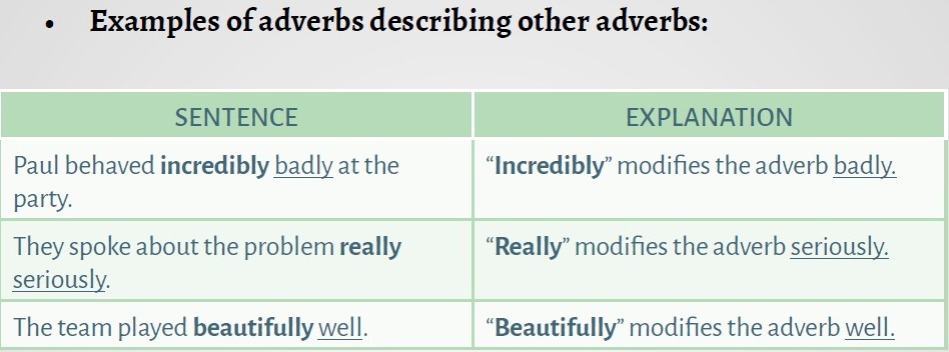
Stage I: Introduction to morphosyntax
Parts of speech
Parts of speech (also known as word classes) are the different categories in which words are classified according to their function within a phrase or a sentence. By familiarizing with the function and behavior of the different parts of speech you will be able to get essential understanding of the English language. As you will realize through this course, English is a much more structural language than Spanish. In English every single part of speech tends to be in the same position in all sentences, whereas in Spanish sentence structure is extremely flexible. For instance, one of the biggest differences in both languages is that word order is much more rigid and strict in English than in Spanish.

What are the 9 parts of speech?
English contains nine (9) types of parts of speech. Getting to know what they are and how they work in a phrase or sentence will help you understand in a simple way how correct expressions are correlated. To be for sure what part of speech a word is, we have to look not only at the word itself but also at its meaning, position, and use (function) in a phrase or sentence. The following chart briefly summarizes the nine parts of speech that we are going to study in this chapter (Buitriago & Chitiva, 2020):

NOUNS

1. Nouns
A noun is a part of speech typically denoting a person, place, thing,
animal, or idea. Check the examples of nouns in the highlighted words
of the following list:
Word endings are useful ways to identify different parts of speech. Some
common word endings for NOUNS are:

2. Determiners
As it could be seen in the first chart of the previous section, nouns can be accompanied by some short words that give some specific characteristics to nouns in terms of number, quantity and possession. Those little words are known as determiners (Buitriago & Chitiva, 2020). There are different kinds of determiners that can be summarized in the following table:


3. Pronouns
A pronoun is a very short word that replaces or takes the part of a noun in a phrase or a sentence. There are four (4) types of pronouns that we are going to study in this module. Basic level learners tend to confuse the use of different pronouns due to their spelling similarity. This is not a minor issue. It is extremely important to differentiate both function and position of each different type of pronoun to express yourself properly in English. The following table gives you a short introduction to the different types of pronouns and their use. Analyze the chart and its contents very carefully (Buitriago & Chitiva, 2020).

4. Verbs
A verb is a part of speech that usually denotes an action (i.e. jump, dance, swim). It can also refer to a state of being (e.g. exist, become, feel) or an occurrence (i.e. happen) (Buitriago & Chitiva, 2020). Check the examples of verbs in the highlighted words of the following sentences:


In examples (1), (3) and (5) the way adjectives are used is very similar to to the way they are used in Spanish in terms of word order. There is a distance between the noun (or subject pronoun) and the adjective. That is, they are separated by a verb and some modifiers (e.g. My brother's car is very old, the movie was simply fantastic, she seems so excited).
However, in sentences (2), (4) and (6), the word order needs to be analyzed, as it is a grammar rule in the English language. In these cases, you can see that both the adjective and verb are together; they are not separated by any other word (e.g. "beautiful dog", "serious topic" and "new house"). As you can notice in these examples, the adjective comes always before the noun. Some other examples can be:
- blue sweater
- happy weekend
- relaxed pronunciation
- strong player
- dangerous country
5. Adjectives
An adjective is a part of speech in charge of describing nouns and subject pronouns. An adjective gives a positive or negative quality to the corresponding noun – or subject pronoun – it describes. Let's take a look at the following examples of adjectives in the highlighted words of the sentences in the chart below (Buitriago & Chitiva, 2020).
As you can see in the previous sentences, the underlined words are thenouns or subject pronouns each adjective describes.
- In (1) old describes car.
- In (2) beautiful describes dog.
- In (3) fantastic describes movie.
- In (4) serious describes topic.
- In (5) excited describes she.
- In (6) new describes house.
Word endings help to identify different parts of speech, and adjectives are not the exception. Some common word endings for ADJECTIVES are:

6. Adverbs
An adverb is a part of speech that describes verbs, adjectives and other adverbs.
Most of adverbs in English are derived from adjectives, and they use the suffix "ly" as their main feature. The following table shows this close relation between adjectives and adverbs (Buitriago & Chitiva, 2020).




NOTE: This shows that you can create an adverb just by taking an adjective and adding the suffix "ly". There are few exceptions where the adverbs are formed in a different way. The following table will present the most remarkable exceptions.


7. Prepositions
A preposition is a word that relates a noun or pronoun to another noun in a sentence. They can indicate time, position or place:
- The dog sat under the tree.
- The next exam will be within three weeks.
- Our new neighbor's son studies law at Harvard.
- You didn't wait until the end of the class.
- My girlfriend left before lunch time.
The following table introduces us a complete list of prepositions used in English (Buitriago & Chitiva, 2020).
8. Conjuntions
A conjunction is a short word that connects two parts of a sentence.
The most popular and simple conjunctions are called "coordinating conjunctions" and they are:

Conjunctions can be used basically in two different situations:
- Conjunctions can simply connect two or more elements of a sentence, as in the following examples:
- • John and Linda are studying for the final exam.
- • She could go to Brazil or Aruba for vacations.
- • Mark eats all types of food but seafood.
NOTE: As we could notice in the above examples, in this simple use of conjunctions we do not use a comma.
2. As we are going to check in future chapters, a compound sentence is essentially a sentence made up of two shorter sentences. Each part (or shorter sentence) of a compound sentence is called "clause". Thus, a coordinating conjunction usually connects two clauses of a compound sentence, as in the following examples:
NOTE: As we could see in the examples above, in this use of conjunctions we can sometimes use a comma before the coordinating conjunction.


There is other type of conjunction derived from coordinating conjunctions and they are called "paired conjunctions" or "correlatives". They are some expressions that must go with a specific set of words to make complete sense and accomplish their function within the sentence (Buitriago & Chitiva, 2020). These are:

NOTE: We use coordinating conjunctions or correlatives to connect two elements of the same category.
For instance, if the first element connected is a noun, the next element must also be a noun. Another case, if the first element is a prepositional phrase (preposition + noun) the next element must have the same characteristic. Further, if the first element is a complete "clause" the next element must be a "clause" as well (Buitriago & Chitiva, 2020).
Let's see this with examples:

NOTE: We use coordinating conjunctions or correlatives to connect two elements of the same category.
For instance, if the first element connected is a noun, the next element must also be a noun. Another case, if the first element is a prepositional phrase (preposition + noun) the next element must have the same characteristic. Further, if the first element is a complete "clause" the next element must be a "clause" as well (Buitriago & Chitiva, 2020).
Let's see this with examples:


9. Interjections
An interjection is a short utterance that usually expresses an emotion and is capable of standing alone. This means that it does not really need other parts of speech to convey the full meaning of the emotion.
Interjections are also defined as "exclamations", and they are not framed within the category of words, since they usually represent certain conventional sounds that imply something. In writing an interjection is usually followed by an "exclamation mark" (!) (Buitriago & Chitiva,2020).
The most popular interjections and their meaning in the English language are:
.

